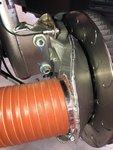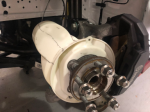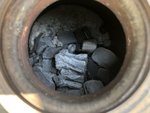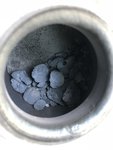Can someone explain to me the advantage of using a full backing plate on the brakes for cooling?
Here is a picture of the Vorschlag 2018 GT project car with a full plate
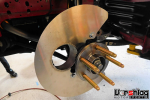
I did see a picture that Spartan posted of the GT4 hose hub adapter, the carbon fiber piece and it did not integrate into a full backing plate. I know that they had problems with cooling and I am sure that they did their homework on the final design. I would think that if Ford engineers didn't use a full backing plate there must not be any advantage to using one.
Here is another picture of the Vorsclag setup on their 2018 GT with 4" hose. If I did this on the GT350 the tire would rub on the hose with anymore then 1/2 turn of the wheel Maybe the car is only driven in a straight line
Maybe the car is only driven in a straight line 

picture credits go to Vorschlag
Here is a picture of the Vorschlag 2018 GT project car with a full plate

I did see a picture that Spartan posted of the GT4 hose hub adapter, the carbon fiber piece and it did not integrate into a full backing plate. I know that they had problems with cooling and I am sure that they did their homework on the final design. I would think that if Ford engineers didn't use a full backing plate there must not be any advantage to using one.
Here is another picture of the Vorsclag setup on their 2018 GT with 4" hose. If I did this on the GT350 the tire would rub on the hose with anymore then 1/2 turn of the wheel

picture credits go to Vorschlag
Last edited:
